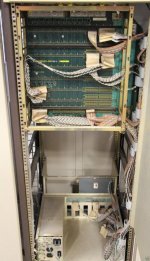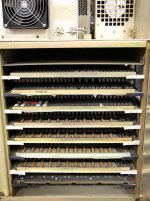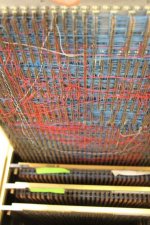MattisLind said:
...Signetics, by the way had the 8X305 bipolar series...
Yes, we were a 8x300 design shop mostly; the company had used it in video drivers, navy map protocol converters and winchester drives in the late 70s. The company had one of the few 8x300 emulators from company that originally made the processor, from whom later Signetics bought the rights.
The design I mentioned was for a faster version of winchesters for which an 8x300 in the data stream was no longer feasible so I had to design a new architecture. My mentor there, one of the owners, made the mistake of specifying that the board would be a two-sided board with no power and ground plane to improve margins as they had done that with all previous boards. However he had to make a second layout version of it with power and ground planes. At this time printed circuit board layouts were still done by tape and mylar.

The problem with the 8x300 for new designs at that time was that there was no support platforms from Signetics yet. Getting an emulator at that time was extremely difficult. To compile 8x300 code, we used an Intel ISIS development system's 8080 assembler, using macros for the 8x300 opcodes. The listings were a mess but its code was true.
I hopped to S.D.System to design their Versa-Floppy-Winchester III for the IEEE-696. I recommended using an 8x300 because would have been a better design and it was certainly fast enough for those drive interfaces. But S.D.Systems was locked into the WD1010 chip set and I think they had already invested a lot of time waiting for WD to stop changing their design of the 1010/1014/1015 chip set so the board could be started. The board was so tightly packed with chips that we had to use CAD layout from the same firm in Atlanta that did D.C.Hayes boards to get it to fit on an S-100 board.
When Western Digital later started using 8x300 on the WD100x series, I assumed that was due to one of the following: (1) the same company designed them for WD, (2) an employee from the company hopped to WD and designed it for them or (3) that Signetics had fielded a new emulator and assembler for WD to use.





